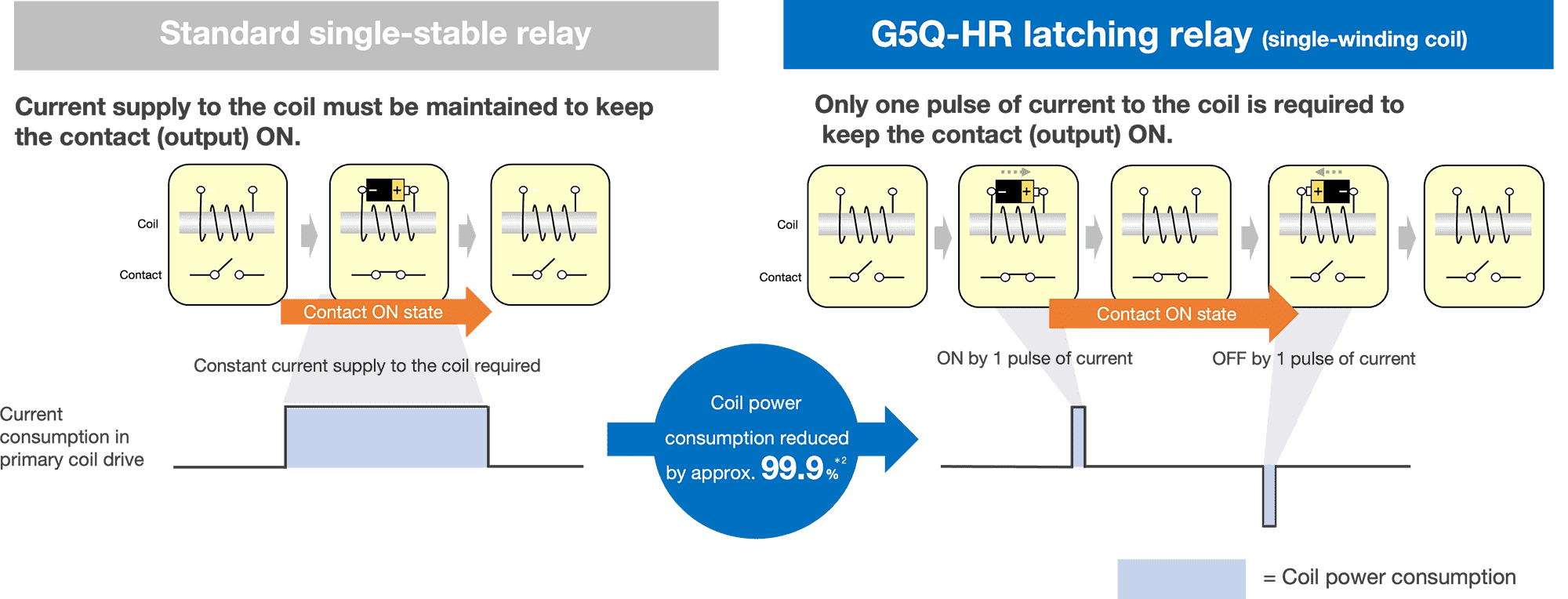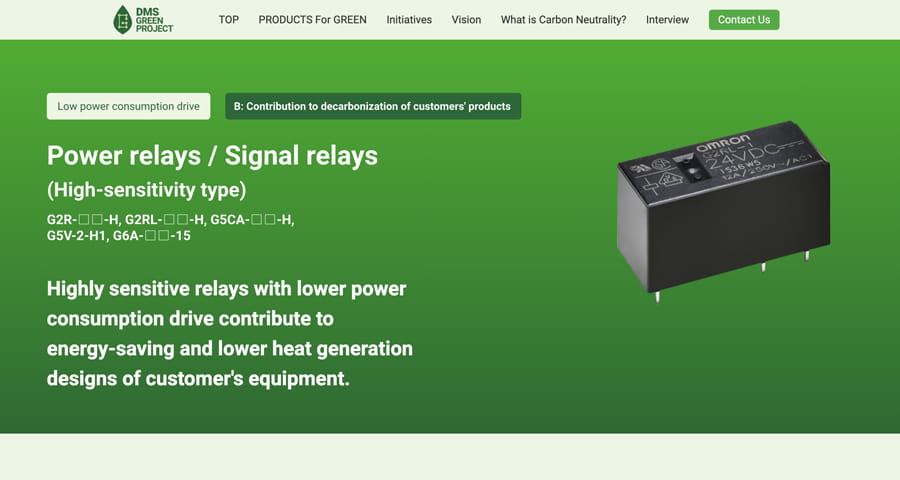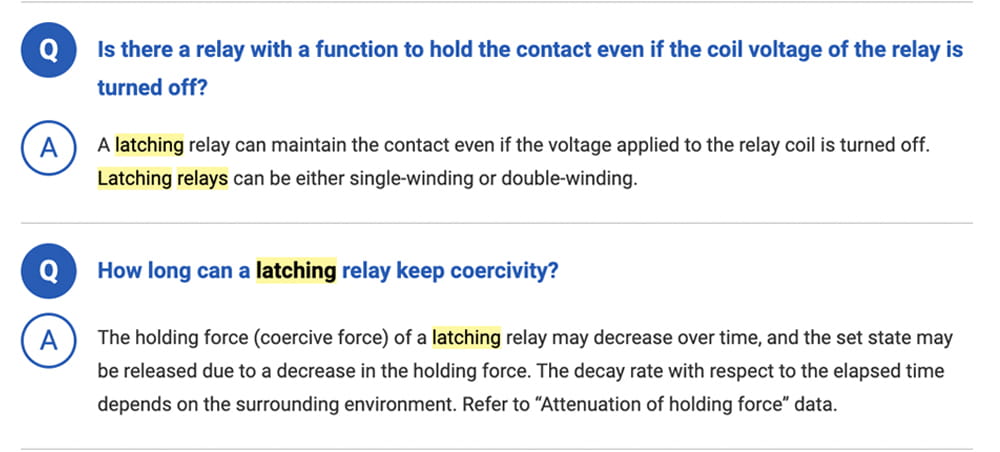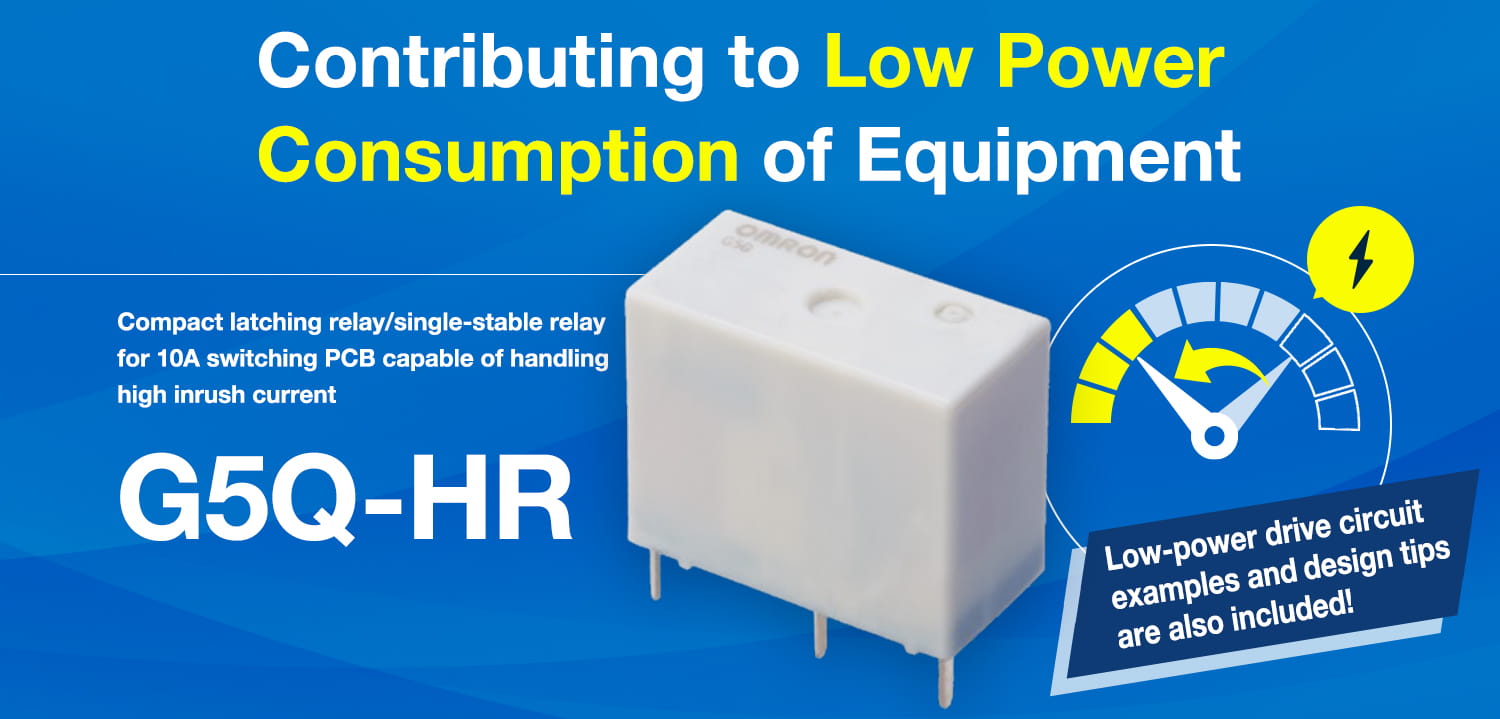Responding to climate change has become an urgent issue, and lowering power consumption further is required in various applications. The challenge is not only to optimize system control, but also to reduce the power consumption of the equipment itself.
This page introduces the compact latching relay/single-stable relay G5Q-HR, which contributes to lower power consumption of equipment, and provides examples of low-power consumption drive circuits for effective use of the relay.
Do you have any of these needs?

G5Q-HR compact power relay supports
solutions to needs with three features.
G5Q-HR
Latching function added to the long-selling compact G5Q series!
Certified to handle various inrush current ratings

| Rated load | 10 A / 277 VAC |
| Contact form | SPST-NO (1a) |
| Electrical durability*1 | 50,000 times (8 A 277 VAC), 10,000 times (10 A 277 VAC) |
| Type | Single-stable, Single-winding latching (G5QU), Double-winding latching (G5QK) |
| Certification of standards | Conforms to TV8 ratings, etc. |
*1 For resistive load, 23°C, 1 sec ON / 9 sec OFF

If you want to know the low power consumption drive circuit examples immediately, click here to download.
●Feature 1: Low power consumption
Latching function is newly incorporated into the long-selling G5Q series. A latching relay can maintain the contact (output) ON state with only one pulse of current and achieve a significant reduction in power consumption. By reducing the drive power, the heat generated by the component itself can also be reduced.

For example, comparing the power consumption speed of 3 batteries (1900mA/h)*3

*2 Comparison of power consumption of G5Q-1A single-stable relay and G5Q-HR latching relay (single-winding) when the contact is kept ON for 24 hours each (according to OMRON's research as of February 2024)
*3 Calculated theoretically when 3 batteries (1900 mA/h) are consumed by G5Q-1A DC5 (single-stable type) in constant drive and when G5Q-HR DC5 (single-winding latching type) is turned on and off a certain number of times. Assuming ON/OFF of lighting equipment as a usage case, and assuming 5 times/day for a latching relay (because constant drive of a latching relay consumes only the current of one pulse at the time of ON, which is not enough to consume the battery).
Note: These are theoretical figures based on the power consumption of the relay coil only. Please keep in mind that in reality, there are natural discharges of batteries and voltage conversion losses.
●Feature 2: High inrush current resistance
It can be applied for high inrush current loads such as lighting (lamp) loads and power supply (capacitor) loads.

Supports lamp load (TV8 certified) and capacitor load (IEC 60669-2-1 certified).
Also compatible with E-ballast 3 A (single-stable type) and 5 A (latching type).
Note: Please evaluate the product on the customer's actual equipment before considering incorporation.
●Feature 3: Compact package
Smaller than Omron's conventional products, contributing to downsizing and adding functions to equipment.

*4 Comparison with typical latching relay model G5RL (research as of March 2024)
*5 Dimensions above are maximum values.
OMRON's Latching Relay Lineup
There are other products in our product line besides G5Q-HR. Please consider your choice according to your application.

Click here for details of each product (G6K, G6S, G6B, G5Q, G6C, G2R, G5RL-U/-K)
Examples of Low Power Consumption Drive Circuit
Compared to semiconductor components, mechanical relays tend to consume more power, but by devising circuit control, it is possible to design them with lower power consumption. Please refer to the following documents for design reference for examples and concepts of low power consumption drive circuits for latching relays (single- and double-winding coil) and single-stable relays.

↓Click to see some of the contents
Inquiry
We will support you in selecting a relay for your application and designing low power consumption drive circuits.
Related Contents
For other relays and sensors with low coil drive power consumption:
Power/signal relay (high-sensitivity type)


Click here if you want to know more about the different types of coils
(e.g., the difference between single-stable and latching)
Click here to learn more about inrush current types and ratings


Click here to learn more about examples of inrush current protection circuits and how to select the best relay


Latching Relay FAQ
Click here for frequently asked questions about latching relays

Common Precautions for Relays
See section 2-2-17 - for latching information.







